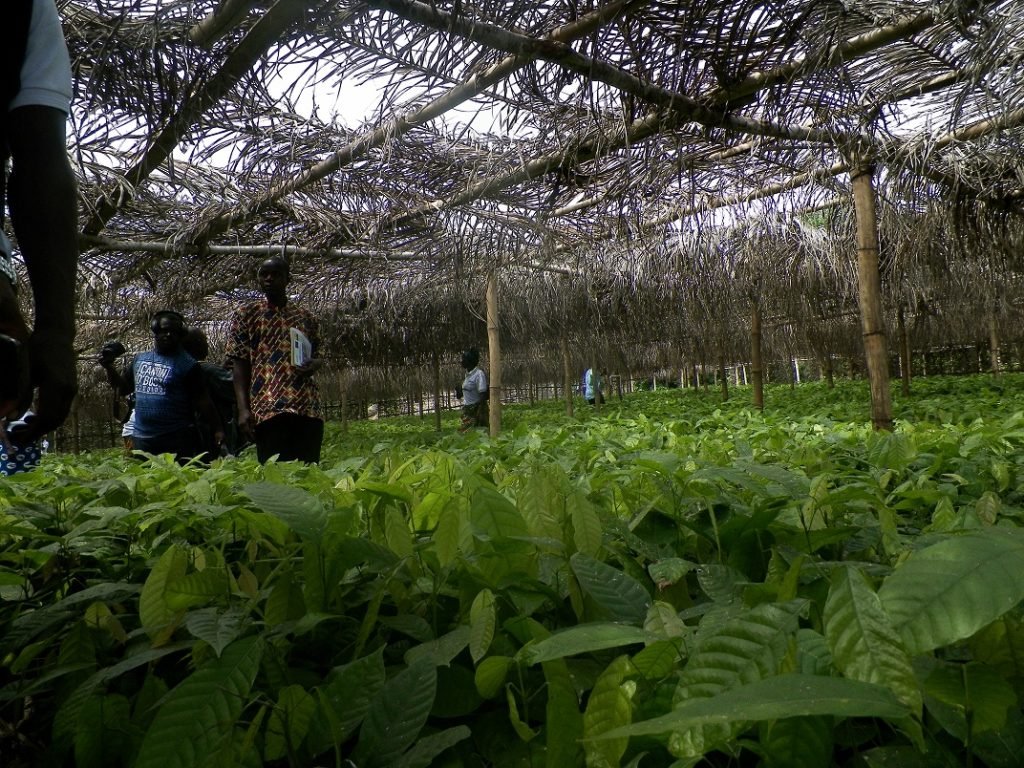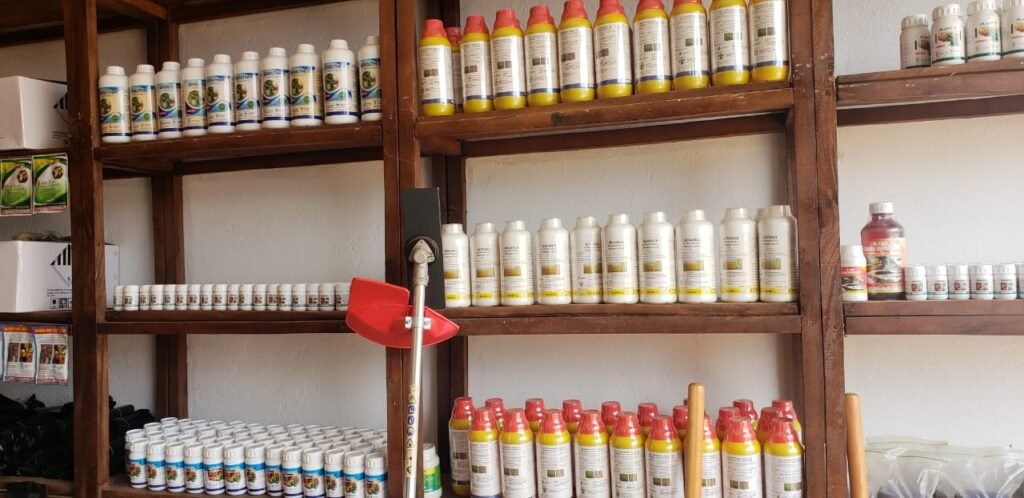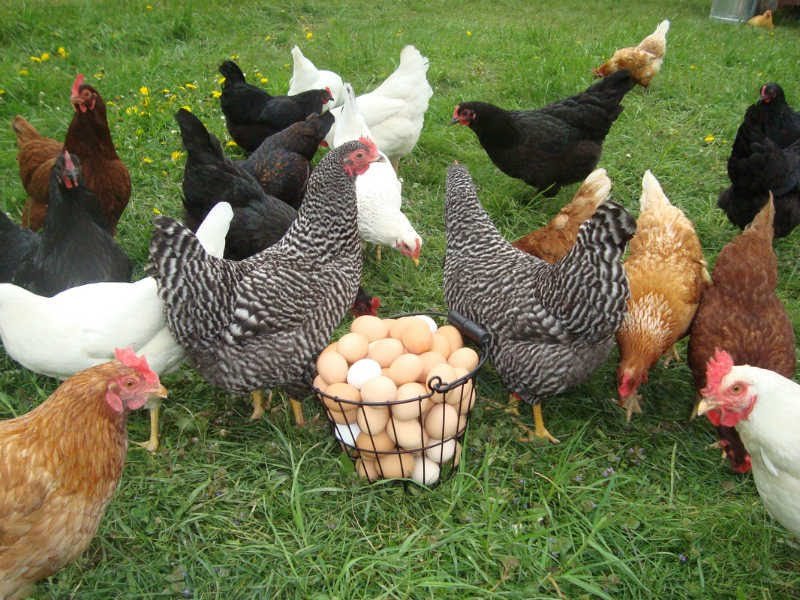Cocoa Farming: Nursery operations that guarantee success

Nursery activities should be targeted towards the growth of really well-grown and robust seedlings free from major pests and diseases.
There are no alternatives for beginning with really well-nursed planting materials. Cutting corners in the nursery, such as overcrowding seedlings to save space and planting small undersized seedlings, usually just ends up more costly in the field.
Small seedlings in the field are more difficult to look after. These cannot tolerate harsh growing conditions, as well as well-grown seedlings, and will also come to bear much later. Longer immaturity means higher cost of production and lower cash flows.
Seeds
Seeds must be ordered well in advance from a variety of reputable sources, especially where large plantings are involved. It is necessary to ensure that sufficient quantities of the appropriate crosses are available for planting at the correct time.
The number of seeds to be ordered depends on planting size, projected losses in the nursery due to non-germination, runts, poor production, pest/disease damage and losses in the field after planting.
Under normal circumstances, to allow for non-germination, nursery slaughter, and supply, an additional 40 percent of the seed must be ordered.
Nursery Site
The nursery site should be well-drained, close to cheap sources of sufficient and reliable water supply and good topsoil (potting medium) and the field to be planted; well secured from animals and theft and within easy monitoring range.
The area allocated must provide for the distribution of poly-bags, as well as for drainage, paths, and access to transport. For good growth and to prevent etiolation, the seedlings should be spaced out depending on the nursery time.
The perfect shade for nurseries is one that can be changed to provide the appropriate amount of light for optimal growth. The shade is supposed to be about 80 percent when sowing. The shade regime should be gradually reduced to around 50 percent on field planting. PH of soil, if not already known, should be checked and corrected to 5.5 to 6.5 units.
Bag Filling
Bag filling is more efficient if a hopper and funnel are used. Bag bottoms should be folded in so that bags sit better.
The soil should be allowed to settle in the bags before planting seeds. However, bags should not be filled more than 2 to 3 weeks in advance of planting and should not be filled when the soil is wet.
The bags should be spaced out at the suggested spacing before planting.
Spacing at a later stage is undesirable as the growth of cocoa seedlings are adversely affected if shifted. At the same time, the double handling of large numbers of bags is labor-intensive and expensive. Delay in spacing out is also not uncommon, resulting in the etiolation of the seedlings. This is extremely undesirable. Etiolated seedlings are difficult to establish and grow poorly in the field. In extreme cases, the seedlings have to be supported to remain erect.
Planting Seeds
On receipt, a responsible person for airing and checking should open and spread the bags holding the seeds immediately. This is important because cocoa seeds can still generate a fair amount of heat in transit, although they are properly processed and cleaned. Increasing excessive heat can kill the seeds.
As soon as they are received, seeds can be planted. Additionally, before planting, they can be pre-germinated. When non-germination is expected to be small, the latter approach is favored.
It is necessary to avoid deep planting. Since cocoa seed germination is epigeal, in the germination process the cotyledons are lifted above the surface. Therefore, as the cotyledons emerge from the soil during germination, one should not try to cover up the seeds with dirt.
Watering
Watering in a polybag nursery may be the most important single requirement. For good growth, adequate water should be given. Nevertheless, over-watering should be avoided particularly in the first 2-3 months as the young seedling of cocoa is extremely sensitive to water-logging.
Watering is generally sufficient once a day with 1⁄2 to 3⁄4 liters of water per seedling. Nonetheless, by testing the moisture content of the potting media, the correct levels can be calculated. At the top and bottom of the container, it should be moist. Increase the rate when the soil is dry and if it is too warm, withdraw/decrease the rate. During unusually long dry weather spells, the seedlings may need to be watered twice a day.
When possible it is beneficial to have an overhead sprinkler irrigation system. Sprinkler output will determine the length of sprinkling. A rain/day average of 6 mm is generally sufficient. Nonetheless, by analyzing the moisture content of the potting media, the levels should be tested. To ensure even irrigation, the distribution of the sprinkler system should be checked regularly.
Pests and Diseases
Leaf eaters, particularly cockchafers, are the most likely nursery pests. Cockchafer damage is usually higher on the side of the road and in the more open areas where vegetative barriers are smaller. Since even mild leaf loss can significantly inhibit the growth of seedlings, effective control measures such as routine insecticide spraying or erecting frond vegetative barriers along the perimeter should be implemented.
Common nursery diseases are Phytophthora blight, Collectotrichum leaf disease, and Vascular Streak Dieback. All the 3 diseases can cause considerable losses if not controlled in time. Disease monitoring and control is therefore important in the nursery. A combination of cultural practices (reducing inoculum/humidity and improving drainage) and fungicide spraying usually provide adequate control.
Manuring/Records
At the nursery level, the nutrient requirements of cocoa seedlings are not high. Small amounts of balanced applications of nutrients are usually sufficient to ensure good growth. However, the use of good potting media mixed with rock phosphate is essential. If they are too acidic, the media pH should also be changed or 5.5 to 6.5 with calcium calcareous.
Proper nursery records must be maintained to identify the type of hybrids, source of seeds, number of seeds ordered/planted/germinated, culling and number of seedlings suitable for planting.




